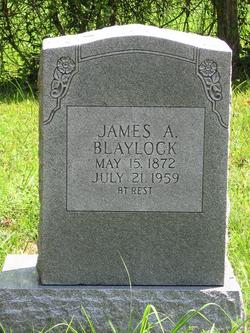James A. Blaylock operated a small farm near Brotherton, TN, where he farmed, shod horses and made furniture and his specialty chairs from timber grown on his land. When he learned of work with wages at the CH, he headed up the mountain and signed on in 1934.
He was assigned to the shop at No. 1 Grassy Cove where he distinguished himself by his friendly demeanor, work ethic and skill as a carpenter. CH Administration saw that he was the kind of person they wanted on the project. The one bump in the road was his advanced age that had not slowed his work but fell outside the guidelines for Homesteaders (it is true that the project favored younger families in the expectancy that they would more readily adjust to the changes necessary for success).
His oldest son, Claude, 22 and already working on the project, was the answer—if only he had a wife (rules, you know). That problem was lessened by Claude’s already developing interest in Georgia, the 18-year-old daughter of the Rev. L.P. Wegonest, living at No. 1 Coon Hollow. Her family came to CH from Grundy County after serving as missionaries to Native Americans in the hill country of South Dakota.
After Claude and Georgia were married the two-generation family was assigned to the barn at 29 Pigeon Ridge, with move in on Oct. 19, 1935. The barn, like others on the project, had partial flooring, a ladder attached to the wall for loft access and a felt called “tar paper” for insulation on walls and floor— not especially lovely, but quite functional. The family heated up the old wood stove on really cold days to a point where the tar paper actually began to melt (do not touch with bare feet).
With nine tenants that barn became a very busy place. Life was hard and made more bearable by helping others and being helped by them. The family lived in the barn for two years to the day before they moved into their house. When they did move, Rosa, James’
wife, held a fried chicken lunch for the men who worked on the house; 15 came. This large gathering serves to demonstrate hospitality as well as the practice of working on the house of a neighbor. A closer look at the life of the Blaylock family will show similarities and differences from other families.
The ladies and girls had lots of work of a great variety. Rosa ran the house (barn) and kept all of her charges engaged.
Contributor: Debra Lewis (47735484)
James A. Blaylock operated a small farm near Brotherton, TN, where he farmed, shod horses and made furniture and his specialty chairs from timber grown on his land. When he learned of work with wages at the CH, he headed up the mountain and signed on in 1934.
He was assigned to the shop at No. 1 Grassy Cove where he distinguished himself by his friendly demeanor, work ethic and skill as a carpenter. CH Administration saw that he was the kind of person they wanted on the project. The one bump in the road was his advanced age that had not slowed his work but fell outside the guidelines for Homesteaders (it is true that the project favored younger families in the expectancy that they would more readily adjust to the changes necessary for success).
His oldest son, Claude, 22 and already working on the project, was the answer—if only he had a wife (rules, you know). That problem was lessened by Claude’s already developing interest in Georgia, the 18-year-old daughter of the Rev. L.P. Wegonest, living at No. 1 Coon Hollow. Her family came to CH from Grundy County after serving as missionaries to Native Americans in the hill country of South Dakota.
After Claude and Georgia were married the two-generation family was assigned to the barn at 29 Pigeon Ridge, with move in on Oct. 19, 1935. The barn, like others on the project, had partial flooring, a ladder attached to the wall for loft access and a felt called “tar paper” for insulation on walls and floor— not especially lovely, but quite functional. The family heated up the old wood stove on really cold days to a point where the tar paper actually began to melt (do not touch with bare feet).
With nine tenants that barn became a very busy place. Life was hard and made more bearable by helping others and being helped by them. The family lived in the barn for two years to the day before they moved into their house. When they did move, Rosa, James’
wife, held a fried chicken lunch for the men who worked on the house; 15 came. This large gathering serves to demonstrate hospitality as well as the practice of working on the house of a neighbor. A closer look at the life of the Blaylock family will show similarities and differences from other families.
The ladies and girls had lots of work of a great variety. Rosa ran the house (barn) and kept all of her charges engaged.
Contributor: Debra Lewis (47735484)
Family Members
-
![]()
Margaret Jane Blaylock VanWinkle
1855–1922
-
![]()
William Stewart Blalock
1855–1921
-
![]()
Mary Catherine Blaylock Arnett
1858–1923
-
![]()
John Henningan Blaylock
1861–1928
-
![]()
Ruth Elizabeth "Ruthie" Blaylock Frasier
1863–1948
-
![]()
Elijah L Blaylock
1866–1922
-
![]()
Eliza Hampton Blaylock VanWinkle
1867–1947
-
![]()
George Edward Blaylock
1869–1957
-
Violet Hester Blaylock Norris
1874–1906
-
![]()
Martin Blaylock
1876–1942
-
![]()
Ernest Martin Blaylock
1877–1942
Sponsored by Ancestry
Advertisement
Records on Ancestry
Advertisement



























